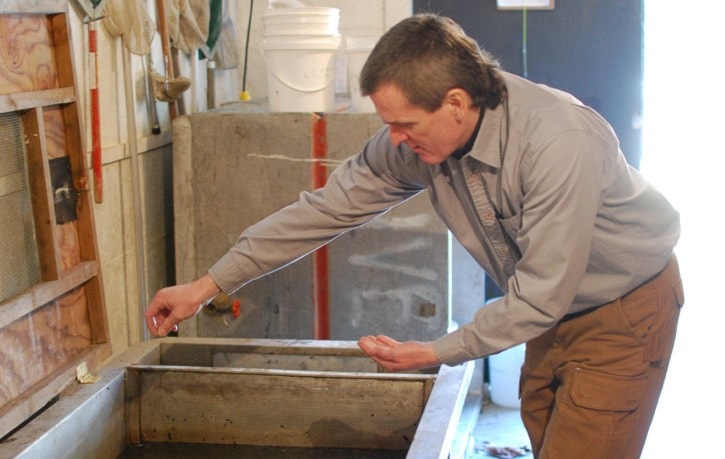Keeping fish populations in the Cowichan Lake and River high isn’t easy work.
Local members of the Lake Cowichan Salmonid Enhancement Society know this fact well, as they spend year after year working on building up fish populations.
The group met most recently a couple weeks ago for their Annual General Meeting, during which time member Bob Crandall was named president.
Crandall brings to his position a history of environmental engineering and advocacy.
Last year, he spent some time with local school students, who he taught the importance of keeping storm water drains free of chemicals.
He also facilitated a visit by Palsson Elementary School students to the local fish hatchery, where they learned the life cycle of local fish.
The main goal for this coming year is increasing the number of broodstock.
“We want to se an increase. A lot larger number of chum,” he said.
The brood stock program involves local fishermen, who catch chum and coho, with the Salmonid Enhancement Society then taking them and extracting their eggs and milt.
This year, the society aims to have 400,000 chum and 25,000 coho eggs fertilized, versus last year’s 33,220 chum and 26,900 coho.
This is quite the jump in chum, Crandall noted.
According to past president Frank Sutherland, 2010 chum numbers were low both here and at Goldstream near Victoria. However, the 2011 chum run this fall is expected to return to the normal level and the Lake Cowichan hatchery anticipates that it will benefit.
Last year’s fish should be ready for release into various local streams within the next four to six weeks, Crandall said.
“We’re just starting to do the feeding now,” he said, of the tiny fish.
Creeks are selected based on how early they dry up, so as to prevent fish from becoming stranded.
This idea is closely related to the society’s fry salvage program, wherein they transport stranded fish out of drying-up creek beds.
Another major goal this year will be side channel improvements. Robertson’s River at Honeymoon Bay is a good example of a success story.
The area was dug out deeper, allowing a greater number of coho and chum to spawn there.
Using biologist Ted Burns’ evaluation of various side channels and creeks, a priority list of waterways will be determined, and worked upon.
The society also hopes to continue working with local children, and toward other educational components.
One thing that will benefit the society this year is a vastly increased membership, thanks in part to their presence at last fall’s Salmon and Mushroom Festival.
“Lots of new members gave a breath of new life to the Salmonid Enhancement Society,” Crandall said.
It’s a relief, he added, as one year ago, a lack of new faces worried some members that the society would have to close down.
That’s no longer as strong a worry, Crandalls said.
Prospective members can call the society at 749-0119.
